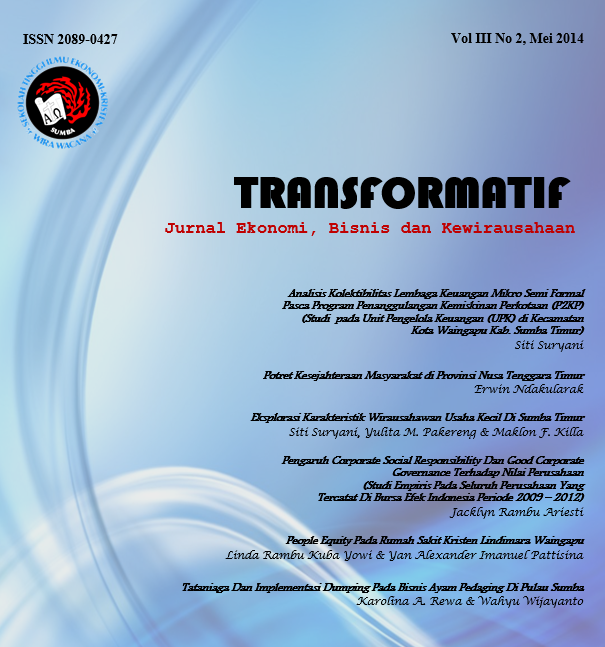Analisis Kolektibilitas Lembaga Keuangan Mikro Semi Formal Pasca Program Penanggulangan Kemiskinan Perkotaan (P2KP). (Studi pada Unit Pengelola Keuangan (UPK) di Kecamatan Kota Waingapu Kab. Sumba Timur)
Keywords:
Collectivity, Semi Formal Microfinance InstitutionsAbstract
Collectivity loan is a reflection of revolving loan management, by observing the good or bad quality of collective loan and the risk of the loan. Implementation of loan activity has purpose to provide access to financial service to poor households with loan based micro-market with income-generating activities. They usually do not have access to source of other loans. However, loans improve their economic conditions and activities in which support the growth of the economy as well as micro-business. In addition, it educates them in managing loans and using the loans correctly.
Revolving funds distributed through groups and mostly run by empowerment programs in the community through a semi-formal microfinance institution such as Financial Management Unit (UPK). This study aims to analyze the performance of the fund management Post P2KP. Four villages in the district of Kota Waingapu are the location of research using indicators LAR, PAR, ROI and CCR.
Based on the analysis conducted to revolving funds in 2010 and 2011 which are managed by Semi Formal Microfinance Institution Post P2KP can be concluded that 1) Collective become 12.97 so that Semi Formal Microfinance Institution Post P2KP has been able to improve performance assessment of UPK from suspend to become adequate for LAR and PAR while for ROI and CCR still remain; 2) KSM in arrears is 13,75 percent of total of KSM funds. The total funds in arrears are 13.25 percent of the funds circulating in the group. The ability to generate profit of 1.75 per cent from the total of capital of revolving funds, while the ratio of income and expenses total of 725,75 percent, which means that gaining the income with little cost
Key words: Collectivity, Semi Formal Microfinance Institutions



